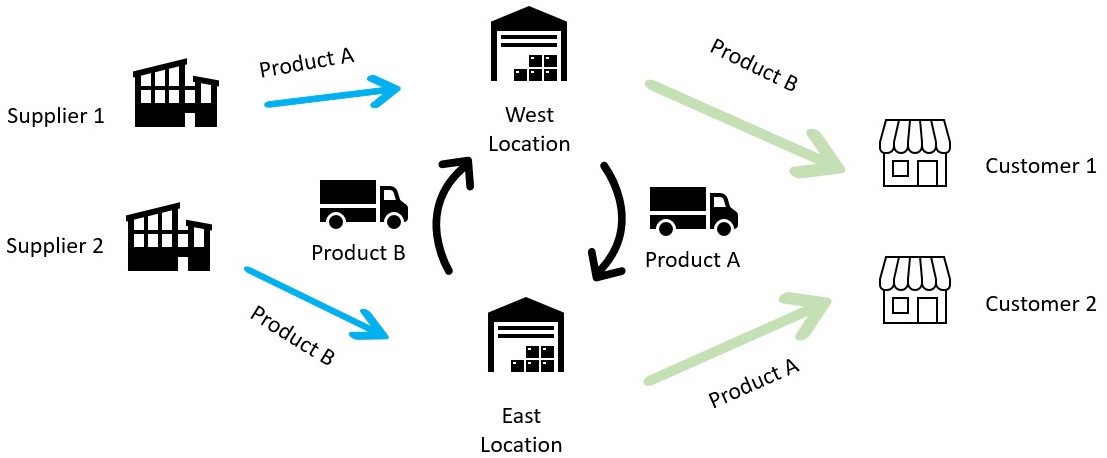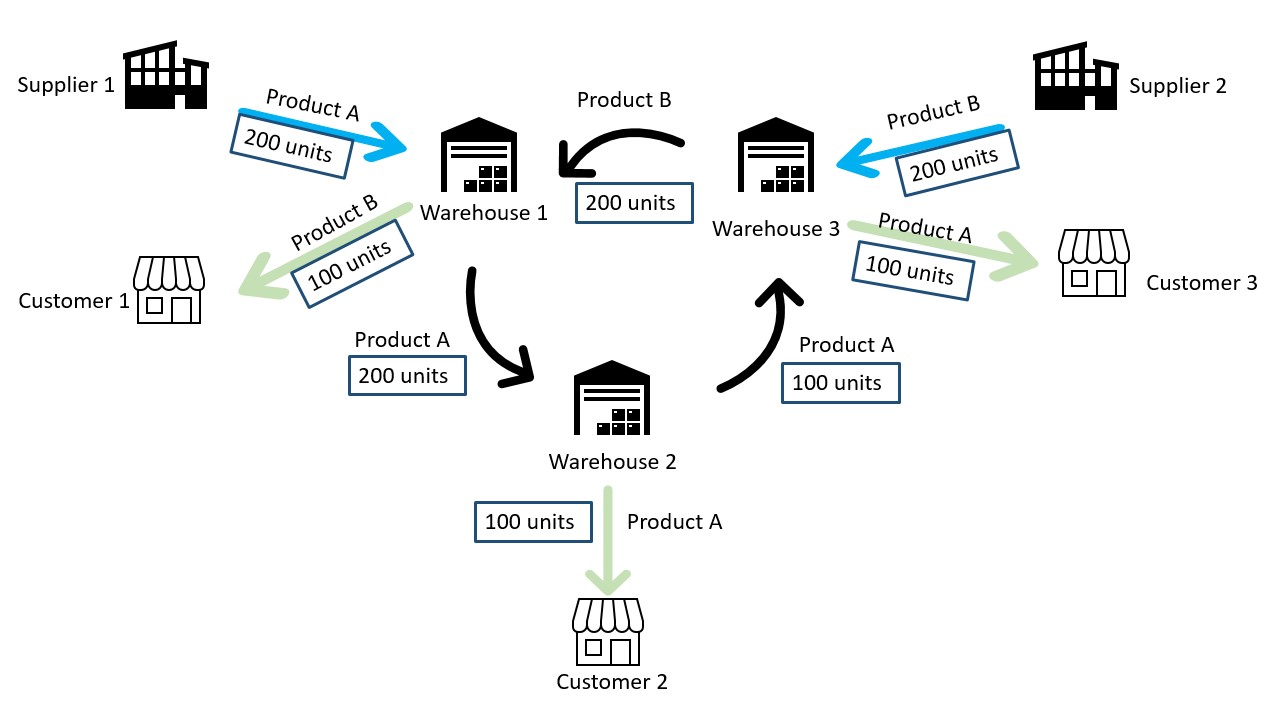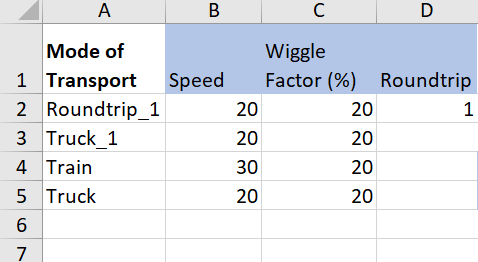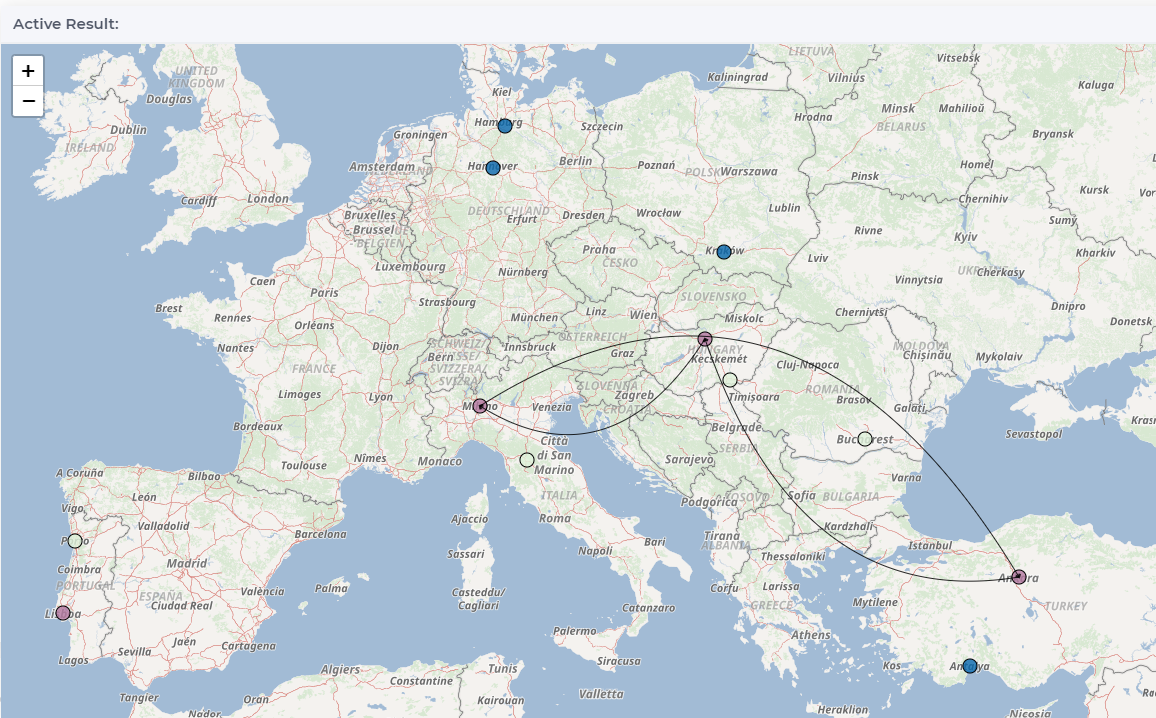Roundtrip Functionality
This page explains how the Roundtrip functionality works in the SC Navigator. In this context, roundtrip means that some lanes form a closed loop. For example, suppose there are two locations, the West Location and the East Location, and the truck belongs to the fleet of the West Location. Furthermore, suppose that the West Location has a product which is needed in the East Location and the East Location has a product which is needed in the West Location. In this case, the truck travels from the West Location to the East Location and then goes back to the West Location with another product which is needed in the West Location. So, this way the trip is shaped as a round, closed loop.

How to define roundtrip lanes?
In order to define roundtrip lanes you can follow these steps:
In the template on the Mode of Transport sheet you can define which transport modes can have roundtrips.
On the Transport Cost sheet you can define the available lanes for a roundtrip. All these lanes should be set as available in the circle. However, this does not mean that the model will actually use all those lanes.
On the Transport Trip Data sheet you can define the Max Difference for each lane. It can happen that the model does not contain all the transportable quantities. The minimum transported capacity per lane can be achieved by using an additional weight, which is not included in the model (not in the demand or in the stock). The maximum difference is the maximum of these additional weights.
Load the template and optimize. Afterwards, the result shown on the map looks as follows:
Explanation of Max Difference
Consider the model instance depicted in the following picture:

For the Roundtrip lanes define the Roundtrip Flow variable for which the following is true:
Roundtrip Flow = Volume (Warehouse 1 -> Warehouse 2) + Tolerance (Warehouse 1 -> Warehouse 2)
= Volume (Warehouse 2 -> Warehouse 3) + Tolerance (Warehouse 2 -> Warehouse 3)
= Volume (Warehouse 3 -> Warehouse 1) + Tolerance (Warehouse 3 -> Warehouse 1)
Here the Tolerance is a theoretical value which is not included in the demand or the stock.
In the concrete example at hand, Roundtrip Flow = 200 + 0 = 100 + 100 = 200.
The Max Difference defined for a lane is the maximum value of the tolerance of that lane. We can distinguish two cases in this example:
The Max Difference for the lane Warehouse 2 -> Warehouse 3 is greater than or equal to 100. The model is feasible and the tolerance for the lane will be 100.
The Max Difference for the lane Warehouse 2 -> Warehouse 3 is less than 100. In this situation the model will be infeasible because there is no tolerance value less than 50 which would make the above equation true.
Note
Tolerance and Max Difference always assume non-negative values.



